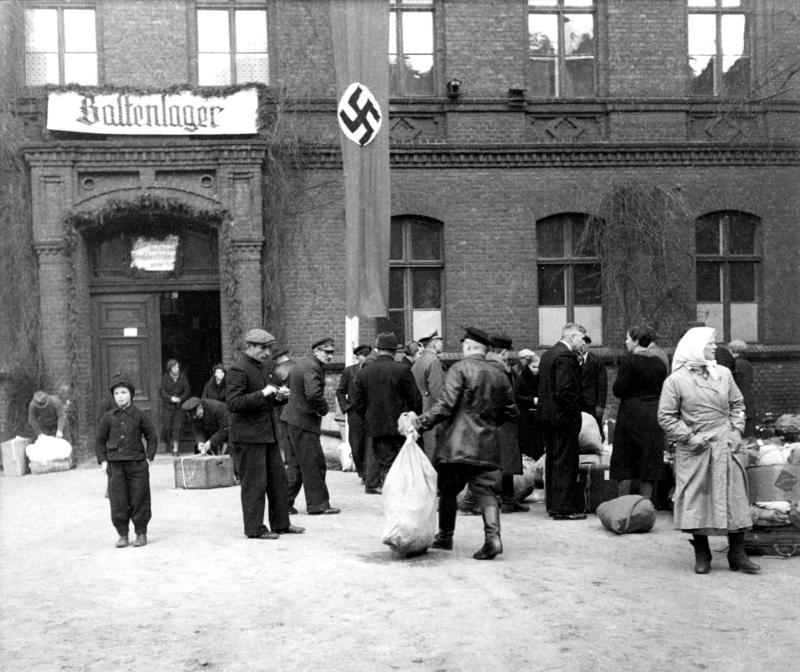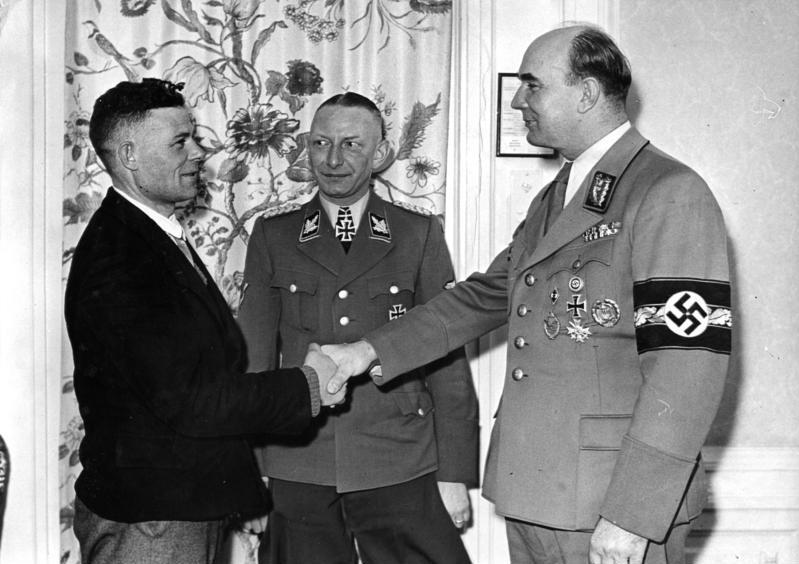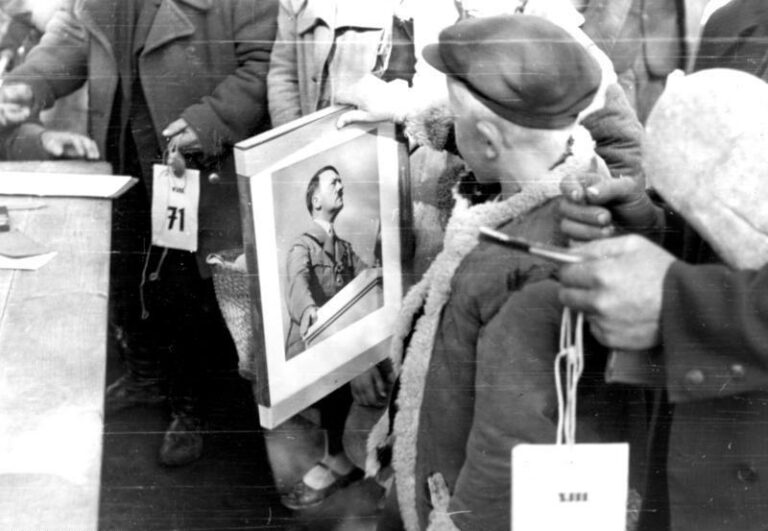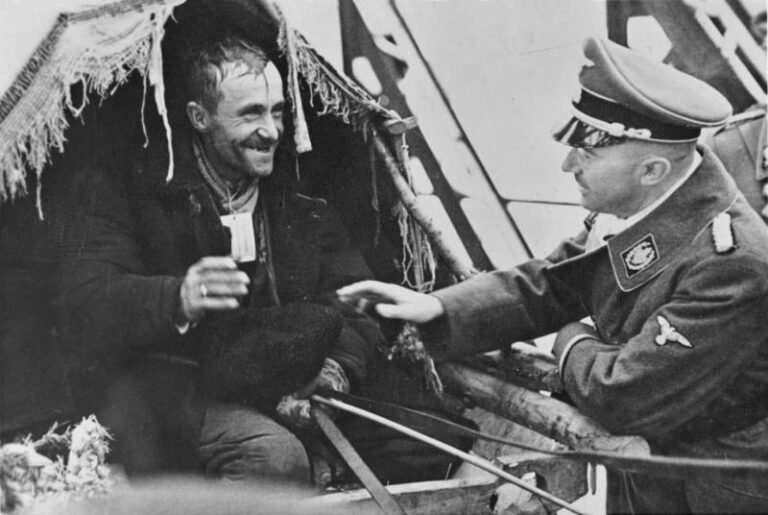Files on the Immigration Central Office are preserved in the Federal Archives. The most important facts about fonds R 69 are summarised here.
| Stock signature: | R 69 |
| Designation: | Immigrant Central Office Litzmannstadt |
| Term: | 1925-1945 |
| Scope: | 9,383 units (as of 2009) |
What does EWZ stand for?
The abbreviation EWZ stands for "Immigrant Central Office". In the context of its history of origin, the EWZ is a collection service of the Reich Security Main Officewhich was responsible for the registration and naturalisation of "ethnic Germans". It was founded in October 1939 and had its first headquarters in Gotenhafen. As early as November 1939, the office was moved to Posen, and in the spring of 1940 it was temporarily moved to Berlin. Finally, in autumn 1940, the main office was moved to Lodz (later Litzmannstadt).

With "flying commissions", the EWZ registered the people on the spot and then, together with the Volksdeutsche Mittelstelle, organised the movement of people, animals and material. Either the Mernschen had to walk with their luggage and livestock in the trek to certain assembly points, or they were brought to these points by bus and train. In addition to the logistics, the EWZ also took over the process of naturalisation and settled the people in the "Old Kingdom" or in the "East" with so-called settlement decisions. During the resettlement, the people also went through a selection process carried out by SS doctors. They decided according to "racial" criteria whether a family was allowed to resettle or not.
What is in the files of the Litzmannstadt Immigrant Central Office?
The "Immigrant Central Office Litzmannstadt" has its own fonds in the Federal Archives Berlin-Lichterfelde with the call number R 69 and comprises more than 9,380 files (as of 2009). It mainly contains information on the planning, organisation and implementation of the resettlement. These include administrative documents such as gazetteers, reports on the historical and current settlement history, transport lists for individual resettlement areas and lists of assets.
For which areas are there documents from the Immigrant Central Office EWZ?
The records of the Immigration Central Office cover the following areas, among others:
➢ Estonia, Latvia, Lithuania (Baltic States)
Poland, Ukraine, Romania, Bulgaria, Soviet Union (Bessarabia, Bukovina, Dobruja, Galicia, Narew region, Transnistria, Volhynia)
Bulgaria, Slovakia, Slovenia (Gotschee, Ljubljana)
➢ Serbia, Croatia, Bosnia
➢ Italy (South Tyrol)
➢ France, Alsace, Lorraine, Luxembourg
➢ Switzerland
➢Greece
What files still exist on the resettlement 1939-1945?
Simultaneously with the founding of the EWZ, Heinrich Himmler (1900 - 1945) was charged with its implementation by "Führer decree" on 7 October 1939 and appointed "Reich Commissioner for the Consolidation of German Nationality" (RKF). Hitler also entrusted Himmler with the tasks of the "Volksdeutsche Mittelstelle", which had been responsible for the political and financial support of the "Volksdeutsche" (VoMi) since 1936. Both the RKF and the VoMi have their own holdings in the Federal Archives. Facts about the RKF can be found here, Facts about Vomi here.
The personal documents of the Immigration Central Office, such as copies of naturalisation certificates or so-called "master sheets" of the EWZ, are not included in fonds R 69. These documents are assigned to fonds R 9361-IV.



